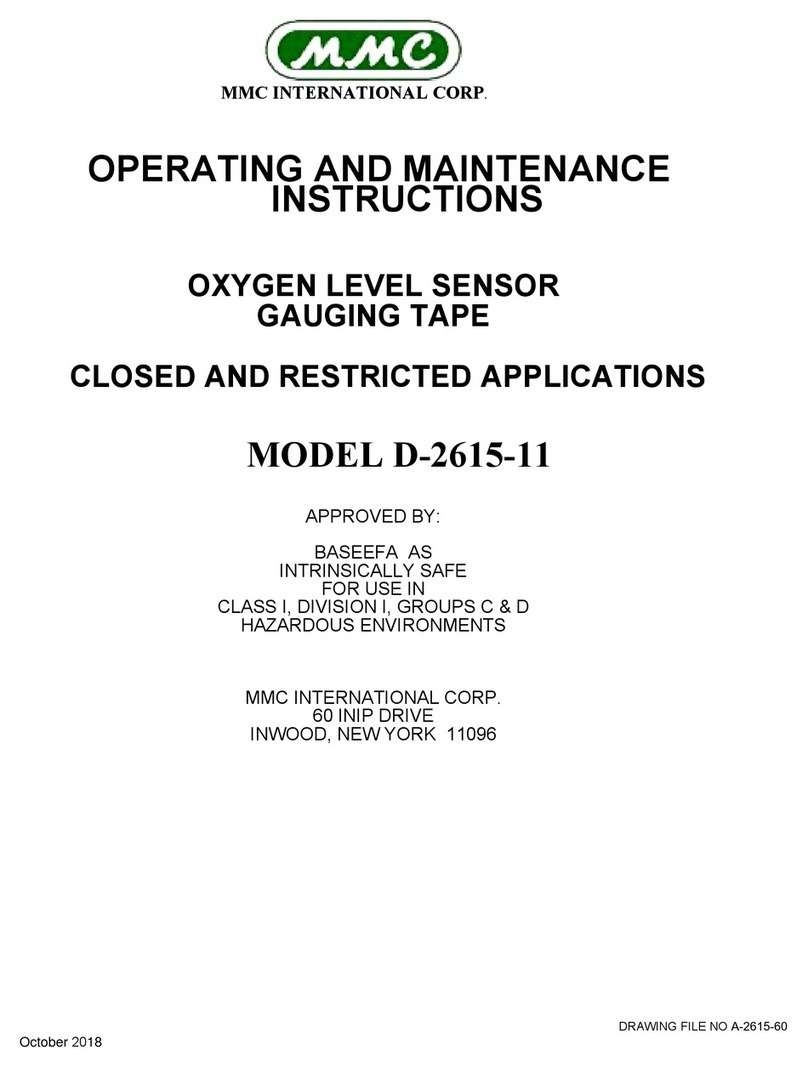
SECTION III
3.0 THEORY OF OPERATION:
3.1 Drawing S-2562-1TR illustrates the main components of the closed Temperature, Ullage,
and Interface system. A tape reel contains the calibrated tape. The reel crank on the
driving hub is used by the operator to raise and lower the sensing head assembly which is
attached to the reel via the tape. Before lowering or raising the tape, the reel brass thumb
screw lock must be unlocked.
3.2 The sensor head assembly contains two piezo-electric crystals, a pair of interface or
conductivity pins and a temperature sensor, located in one of the conductivity pins and
electronic circuit board. The sensor is connected electrically to the driving hub
electronics by the two wires encased in the gauging tape plastic jacket, which covers and
hermetically seals these wires and centers graduated metallic gauging tape. The metallic
tape is used as a ground return conductor, which when including the two wires straddling
it, form a rectangular three conductor transmission cable.
3.3 The electronic circuits in the hub assembly are comprised of an LCD digital display
which provides temperature readings when the system is in the temperature mode; an
analog to digital converter, a power on-off switch, a mode switch which permits operator
to select the temperature mode or ullage/interface mode, a night light switch and ancillary
electronic parts all assembled on a printed circuit board. A 9-volt battery power source
and audio horn are located within the tape reel hub assembly below the P.C. board of the
modular hub cover assembly.
3.4 When the system is placed in the ullage/interface mode, and as the sensor is immersed in
a non-conductive fluid such as oil, a sonic signal originated by the sensor head circuits
freely crosses the sensor gap and is detected, amplified and then transmission tape to the
hub electronics board, which in turn drives a horn in the turning drum assembly. A high
pitched continuous audible signal is then emitted. When the sonic sensor is in air, the
sonic signal does not cross the sensor gap and therefore the horn is silent.
3.5 When the sonic sensor is immersed in a conductive fluid, such as the water layer side of
an oil/water interface, operation is as above except that the conductivity pins within the
sensor gap now permit a minute current to flow between the pins. This current flow is
detected by the sensor electronic circuitry with the sensor housing and suitably
conditioned to cause the sonic signal to be periodically interrupted, yielding a “beeping”
tone for operator identification.
3.6 When the system is placed in the temperature mode the ullage and interface circuits
within the sensor barrel are de-energized, also disengaging the audio signals associated
with the ullage/interface mode. The integrated circuit temperature sensor housed within
the grounded interface pin now functions as an extremely accurate linear temperature to
current transducer. As the temperature at the sensor rises, so does the temperature sensor
current. By passing the temperature sensor current via the transmission tape, through the
electronic component network, with the turning drum, input to an A to D converter is
5




























